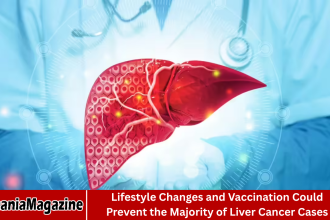For decades, the narrative surrounding health and aging has often revolved around our genetic code — the “blueprint” of life that we inherit from our parents. Many people have been led to believe that their future health outcomes are written in their DNA, making chronic diseases and lifespan feel almost predetermined.
- The Myth of Genetic Determinism
- Epigenetics: The Bridge Between Genes and Lifestyle
- The Role of Diet in Health and Longevity
- Physical Activity and the Aging Process
- Environmental Influences: The World Around Us Shapes Our Biology
- Stress, Sleep, and Mental Well-being
- Technology, Modern Lifestyles, and the Aging Dilemma
- Socioeconomic and Cultural Factors in Health Outcomes
- The Future of Personalized and Preventive Health
- Key Takeaway: You Have More Control Than You Think
- Frequently Asked Question
- Are genetics still important for determining health?
- Can a healthy lifestyle really reverse genetic risks?
- What are the most influential lifestyle factors for healthy aging?
- How does the environment impact aging?
- Can stress really make you age faster?
- How does sleep influence health and longevity?
- What practical steps can people take to live longer and healthier?
- Conclusion
However, a growing body of scientific evidence challenges this deterministic view. Emerging research in epigenetics, longevity science, and public health indicates that lifestyle and environmental factors may influence our health and aging process far more than our genes.
In this comprehensive exploration, we’ll look at how lifestyle and environment interact with our genetic makeup, what modern research says about their impact on aging, and what individuals can do to take charge of their health and longevity.
More Read: Priyanka Chopra Turns Heads at New York Diwali Bash in a Chic Sarong-Style Choli
The Myth of Genetic Determinism
The idea that our health is primarily determined by genetics has deep roots in both medicine and popular culture. It’s comforting in a way — if your health is predestined by your genes, you can’t be held responsible for it. However, the reality is more nuanced.
Scientific studies over the past two decades, including those involving identical twins who share nearly identical DNA, reveal that genes account for only 20–30% of lifespan variation. The remaining 70–80% is influenced by lifestyle choices and environmental exposures.
These findings completely shift how we think about health: it’s not simply inherited but largely created through daily habits. This isn’t to say that genetics play no role. Genes can predispose individuals to certain risks — for example, mutations in the BRCA1.
And BRCA2 genes increase the likelihood of breast and ovarian cancer. But whether or not these genes manifest into actual disease often depends on external influences such as diet, physical activity, toxin exposure, and stress management.
Epigenetics: The Bridge Between Genes and Lifestyle
To understand how lifestyle and environment influence health beyond genetics, we must look at the science of epigenetics. Epigenetics refers to the changes in gene expression that occur without altering the underlying DNA sequence.
In simpler terms, it’s like a dimmer switch for your genes — certain factors can “turn on” or “turn off” specific genes. Factors like smoking, poor diet, pollution, chronic stress, and lack of exercise can trigger epigenetic changes that increase the risk of disease.
Conversely, positive habits — regular exercise, nutrient-dense foods, mindfulness practices, and social connection — can promote beneficial gene expression patterns.
A landmark study by Dr. Dean Ornish, for example, demonstrated that comprehensive lifestyle changes — including a plant-based diet, stress management, and moderate exercise — could reverse heart disease and favorably alter the expression of hundreds of genes associated with disease progression.
This proves that while we cannot change our DNA sequence, we can dramatically influence how our genes behave.
The Role of Diet in Health and Longevity
Nutrition is one of the most powerful lifestyle factors that affects health and aging. The food we eat provides not only energy but also signals to our cells. Diets high in processed foods, refined sugars, and saturated fats are linked to inflammation, oxidative stress, and metabolic diseases like diabetes and heart disease.
Conversely, nutrient-rich diets, such as the Mediterranean, Okinawan, and Blue Zone diets, have been shown to promote longevity and reduce the risk of chronic illness.
Research from the Blue Zones — regions around the world where people live significantly longer and healthier lives — consistently points to a common dietary pattern: mostly plant-based, rich in fiber, moderate in calories, and low in processed foods. This supports the idea that what we eat can literally shape how we age.
Specific nutrients also play key roles in cellular repair and gene regulation. For instance:
- Omega-3 fatty acids from fish and flaxseeds help reduce inflammation and protect brain health.
- Antioxidants in fruits and vegetables counteract oxidative stress, a major factor in aging.
- Polyphenols, found in green tea, berries, and olive oil, influence gene expression related to longevity.
Physical Activity and the Aging Process
Exercise is often described as the closest thing we have to a “fountain of youth.” Regular physical activity enhances cardiovascular health, strengthens muscles and bones, improves mood, and promotes neuroplasticity in the brain. More importantly, it influences biological aging at the cellular level.
One of the most studied markers of aging is telomere length — the protective caps at the ends of our chromosomes. Telomeres naturally shorten with age, but stress, poor lifestyle habits, and lack of exercise can accelerate this process.
Conversely, research shows that regular moderate exercise can slow telomere shortening, effectively extending cellular lifespan. Even simple activities — like walking for 30 minutes a day, gardening, or taking the stairs — can significantly reduce the risk of chronic diseases and premature death.
The World Health Organization recommends at least 150 minutes of moderate-intensity exercise per week, but even half of that can make a measurable difference in long-term health outcomes.
Environmental Influences: The World Around Us Shapes Our Biology
While personal habits matter, our environment — both physical and social — plays an equally critical role. Exposure to pollutants, toxic chemicals, and poor air quality can damage DNA and contribute to diseases like cancer, respiratory illness, and neurodegenerative disorders.
Urban environments with limited green spaces and high stress levels can also negatively affect mental and physical health. Conversely, living in areas with clean air, access to nature, and strong community networks fosters better well-being.
Studies have shown that people living near parks or green spaces experience lower stress levels, improved immune function, and higher life satisfaction. Moreover, social environments deeply impact health.
Loneliness and social isolation are now recognized as major risk factors for early mortality — comparable to smoking or obesity. Conversely, having supportive relationships and a sense of purpose has been shown to strengthen immune function and extend lifespan.
This is another hallmark of the Blue Zone communities, where social bonds and intergenerational support are integral to daily life.
Stress, Sleep, and Mental Well-being
Chronic stress is one of the most destructive forces in modern health. When the body remains in a prolonged state of “fight or flight,” stress hormones like cortisol and adrenaline wreak havoc on systems responsible for immunity, digestion, and cell repair.
Long-term stress accelerates aging, shortens telomeres, and increases the risk of diseases ranging from hypertension to depression. Similarly, sleep — often underestimated — plays a vital role in aging and health.
During deep sleep, the body undergoes cellular repair, detoxification, and memory consolidation. Sleep deprivation has been linked to insulin resistance, obesity, cognitive decline, and cardiovascular disease.
Mental health, too, shapes physical well-being. Practices such as meditation, mindfulness, and gratitude can reduce stress, lower inflammation, and positively influence gene expression. The mind and body are not separate — emotional resilience is a crucial component of healthy aging.
Technology, Modern Lifestyles, and the Aging Dilemma
Ironically, while technology has made our lives more convenient, it has also contributed to sedentary habits, disrupted sleep, and chronic stress. Blue light exposure from screens interferes with melatonin production, while excessive sitting has been labeled “the new smoking” due to its health risks.
Modern diets rich in processed foods and low in fiber have led to a surge in metabolic diseases, even among younger populations. Urbanization has also brought increased exposure to pollutants and decreased physical activity.
These environmental and lifestyle shifts collectively drive accelerated biological aging, even in individuals with “good genes.” However, technology can also be harnessed for good.
Wearable fitness trackers, personalized nutrition apps, and DNA-based health reports allow individuals to monitor their habits and make informed choices. The key lies in using technology as a tool, not a trap.
Socioeconomic and Cultural Factors in Health Outcomes
It’s important to acknowledge that not everyone has equal access to healthy environments or lifestyles. Socioeconomic status influences diet quality, healthcare access, stress levels, and exposure to toxins.
People in low-income or marginalized communities often face structural barriers that increase health risks, from poor housing conditions to food deserts. Public health policies and community-based interventions are therefore crucial.
Governments and organizations can play a transformative role by ensuring access to nutritious food, safe neighborhoods, clean air, and affordable healthcare. This underscores the fact that health is both a personal and societal responsibility.
The Future of Personalized and Preventive Health
As science advances, healthcare is shifting from treating diseases to preventing them. Personalized medicine, which tailors lifestyle and medical interventions to an individual’s genetic and environmental profile, is emerging as a powerful approach.
Genetic testing can help identify predispositions, but lifestyle data — including diet, sleep, stress, and environmental exposures — completes the picture. Artificial intelligence and big data now allow researchers to analyze how genes interact with lifestyle factors in unprecedented ways.
The future of health lies in this integrative approach, combining genetics with behavioral and environmental science to create precise, preventive, and personalized care.
Key Takeaway: You Have More Control Than You Think
The greatest revelation of modern health science is empowerment. While you can’t change your genetic inheritance, you have tremendous control over how those genes express themselves.
By eating well, exercising regularly, managing stress, getting adequate sleep, and cultivating positive relationships, you can dramatically influence your biological age, disease risk, and overall quality of life.
Your DNA may set the baseline, but your lifestyle and environment determine the trajectory. In other words, you are not a prisoner of your genes — you are the author of your health story.
Frequently Asked Question
Are genetics still important for determining health?
Yes, genetics provide the foundation for our health, influencing factors like metabolism, body type, and disease susceptibility. However, studies show that genes account for only 20–30% of health outcomes, while lifestyle and environment determine the majority.
Can a healthy lifestyle really reverse genetic risks?
While you can’t change your DNA, you can influence how it’s expressed. Positive lifestyle choices — such as exercising, eating well, and managing stress — can activate protective genes and suppress harmful ones through epigenetic mechanisms.
What are the most influential lifestyle factors for healthy aging?
Key factors include a balanced, plant-rich diet, regular physical activity, quality sleep, stress management, social connection, and avoidance of smoking or excessive alcohol. Together, these habits promote longevity and disease resistance.
How does the environment impact aging?
Environmental exposures — including air pollution, toxins, and social surroundings — can accelerate aging and disease. Conversely, living in cleaner, greener, and more socially connected environments supports longer and healthier lives.
Can stress really make you age faster?
Yes. Chronic stress raises cortisol levels, damages DNA, and shortens telomeres, the protective ends of chromosomes. Managing stress through mindfulness, breathing exercises, and healthy social support can slow aging at the cellular level.
How does sleep influence health and longevity?
Sleep is vital for cell repair, hormone balance, and immune function. Poor sleep is linked to obesity, diabetes, heart disease, and cognitive decline. Adults should aim for 7–9 hours of quality sleep each night for optimal aging.
What practical steps can people take to live longer and healthier?
Start with small, consistent actions: eat whole foods, stay active, manage stress, connect socially, avoid toxins, and get enough sleep. Over time, these habits compound, reducing disease risk and promoting healthy aging — regardless of genetics.
Conclusion
Health and aging are far more dynamic and flexible than once believed. The interplay between genes, lifestyle, and environment defines how we live, age, and thrive. While genetic makeup provides a framework, the blueprint can be rewritten daily through conscious choices.
The science is clear: adopting healthy habits and nurturing supportive environments can override even strong genetic predispositions. In a world where chronic diseases are on the rise, this message is both hopeful and empowering.










